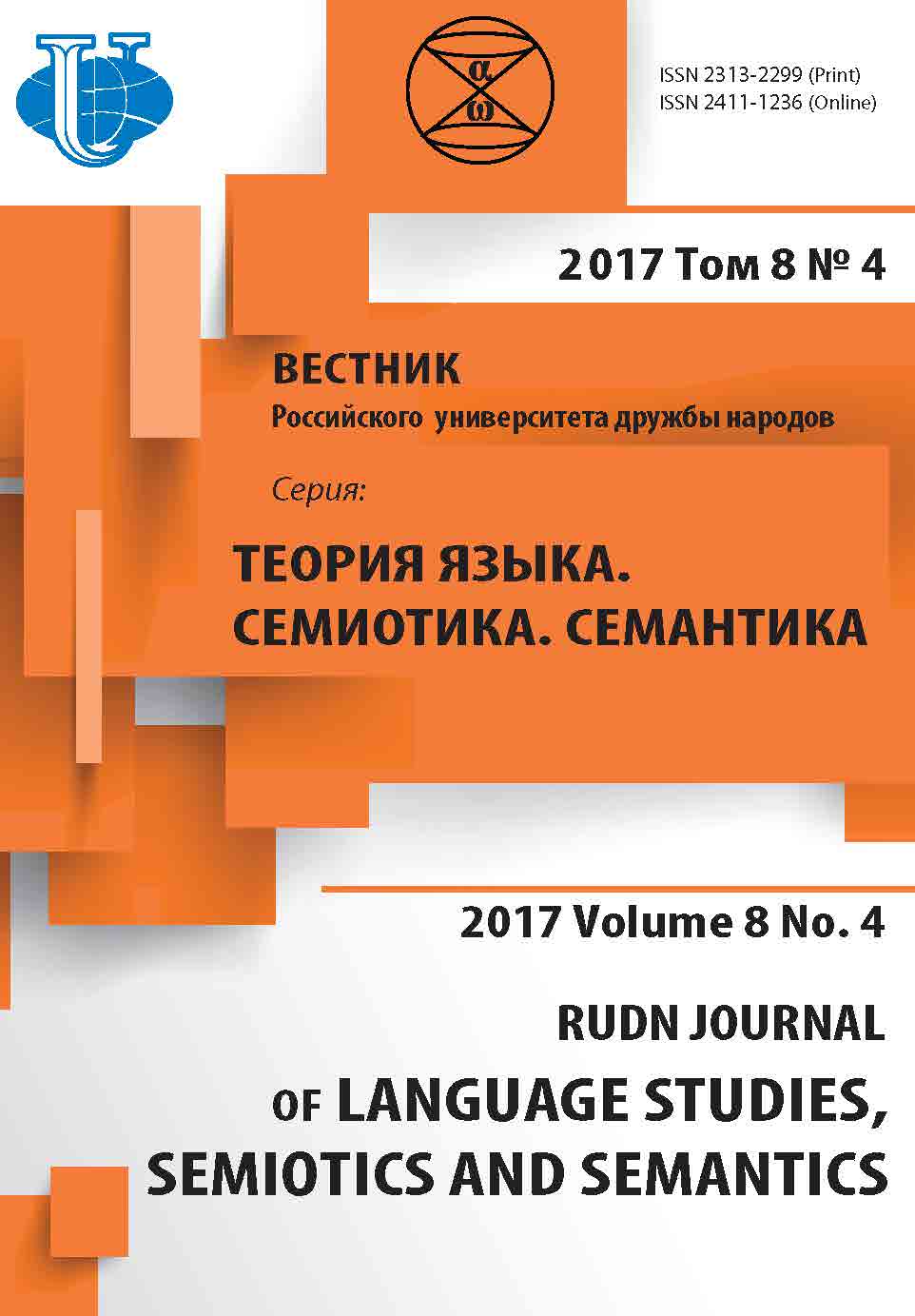“REALMS OF MEMORY” RECONSTRUCTED IN LITERARY DISCOURSE
- Authors: Sheypak S.A1
-
Affiliations:
- RUDN University
- Issue: Vol 8, No 4 (2017)
- Pages: 1219-1227
- Section: ARTICLES
- URL: https://journals.rudn.ru/semiotics-semantics/article/view/18000
- DOI: https://doi.org/10.22363/2313-2299-2017-8-4-1219-1227
- ID: 18000
Cite item
Full Text
Abstract
The paper suggests that literary discourse provides “realms of memory” that are necessary, according to Pierre Nora, for reconstructing national collective memory. If “realms of memory” are revealed in literary discourse, the selected “realms of memory” will not be overabundant and ideologically determined, as they are in the monumental edition “Realms of Memory” by Pierre Nora. Following Nora’s semiotic approach, the paper argues that “realms of memory” selected in literary discourse should be perceived as nodes in the national collective memory. They shape national memory as a dynamic system since each author give their personal interpretation in his/her work. The paper compares how different are authorial interpretations for the “realms of memory” in two works written in the same period: a collection of poems The Legend of the Ages by Victor Hugo and a novel Les Déracinés by Maurice Barrès. The new actualisations of a “realm of memory” in the literary works allows its new interpretations. However, the intrinsic relationship between the subject who remembers and the object of memory enables to create a “second degree history”, such as it was conceived by Nora, revealing how national memory has been constructed.
About the authors
Svetlana A Sheypak
RUDN University
Author for correspondence.
Email: svetlana.sheipak@gmail.com
Sheypak Svetlana Alexandrovna, PhD in Education, Associate Professor, Department of Foreign Languages, Faculty of Philology, RUDN University; Scientific Interests: French literature, discourse analysis, linguistic politeness
10-2A, Miklukho-Maklaya str., Moscow, Russia, 117198References
- Milchina, V.A. (2005). “The Epilogue to ‘the Rhine’” Victor Hugo: nationalist rhetoric as a form of compensation for lost greatness In Republic of literature: France in the global intellectual culture. Edited by S.N. Zenkin. Moscow: New literary review. pp. 224—253. (In Russ.).
- Mikhailov, A.D. (2010). French heroic epic. Questions of poetics and stylistics. Moscow: Librokom. (In Russ.).
- Polyakova, E.L. (2009). “The Legend of the centuries” by Victor Hugo in the context of romantic myth-making: dis. kand. filol. sciences. Lomonosov Moscow State University, Moscow. (In Russ.).
- Potapova, N.D. (2015). The linguistic turn in historiography. SPb.: Publishing house of the European University in St. Petersburg. (In Russ.).
- White, H. (2002). Metahistory converge: the Historical imagination in nineteenth century Europe. Ekaterinburg: publishing house of Ural University. (In Russ.).
- Barrès, M. (1922). Les déracinés: le roman de l'énergie nationale. Paris: Plon.
- Gervereau, L. (2011). Pourquoi canoniser Pierre Nora? URL: http://www.lemonde.fr/idees/ article/2011/11/01/pourquoi-canoniser-pierre-nora_1596553_3232.html (accessed 14.05.2017).
- Hugo, V. La Légende des siècles. URL: https://fr.wikisource.org/wiki/LaLegende des siecles (accessed 14.05.2017).
- Hugo, V. (1859). Préface. La Légende des siècles. Paris: Hetzel. pp. VII—XVII. URL: https://fr.wikisource.org/wiki/La_Légende_des_siècles/Préface (accessed 14.05.2017).
- Hutton, P.H. (2016). The Memory Phenomenon in Contemporary Historical Writing: How the Interest in Memory Has Influenced Our Understanding of History. New-York: Springer Nature.
- Nora, P. (Ed.) (1984). Entre histoire et mémoire. Les lieux de mémoire, La République, t. I. Paris: Gallimard. pp. XV—XLII.
- Schenker, M.H. (2007). Le nationalisme de Barrès: Moi, la terre et les morts. Paroles gelées, 23(1). pp. 5—25.
Supplementary files












